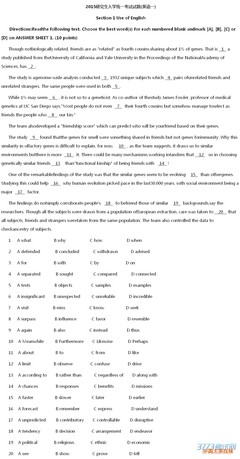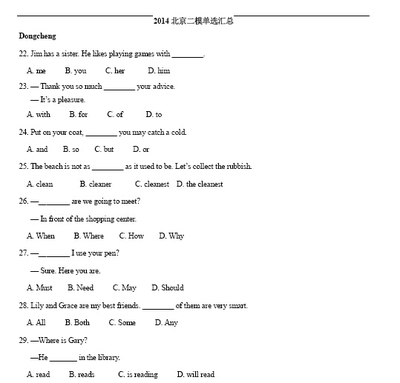来源分析:
文章选自一本小品文集:Gardens: An Essay on the HumanCondition。不出意外,英语一的翻译文章,出题人特别喜欢从某一书中去改编。2013年考研英语一翻译这段话,改编自这本书的59页到61页其中一篇文章,作者从一张照片说开去。。。

具体句子如下,答案分析马上公布。
SectionIIITranslation
Directions:
Read the following text carefully and thentranslate the underlined segments into Chinese. Your translationshould be written clearly on ANSWER SHEET 2. (10 points)
It is speculated that gardens arise from a basicneed in the individuals who made them: the need for creativeexpression. There is no doubt that gardens evidence an impossibleurge to create, express, fashion, and beautify and thatself-expression is a basic human urge; (46)Yetwhen one looks at the photographs of the garden created by thehomeless, it strikes one that , for all their diversity of styles,these gardens speak os various other fundamental urges, beyond thatof decoration and creative expression.
One of these urges had to do with creating a stateof peace in the midst of turbulence, a “still point of the turning world,”to borrow a phrase from T. S.Eliot. (47)A sacred place of peace, however crude it may be, isa distinctly human need, as opposed to shelter, which is adistinctly animal need.Thisdistinction is so much so that where the latter is lacking, as itis for these unlikely gardens, the foemer becomes all the moreurgent. Composure is a state of mind made possible by thestructuring of one’srelation to one’senvironment. (48)The gardens of the homelesswhich are in effect homeless gardens introduce from into an urbanenvironment where it either didn’t exist or was not discernible assuch.In so doing they give composure to asegment of the inarticulate environment in which they take theirstand.
Another urge or need that these gardens appear torespond to, or to arise from is so intrinsic that we are barelyever conscious of its abiding claims on us. When we are deprived ofgreen, of plants, of trees,(49)most of us giveinto a demoralization of spirit which we usually blame on somepsychological conditions, until one day we find ourselves in gardenand feel the expression vanish as if bymagic.In most of the homeless gardens of NewYork City the actual cultivation of plants is unfeasible, yet evenso the compositions often seem to represent attempts to callarrangement of materials, an institution of colors, small pool ofwater, and a frequent presence of petals or leaves as well as ofstuffed animals. On display here are various fantasy elements whosereference, at some basic level, seems to be the naturalworld.(50)It is this implicit or explicitreference to nature that fully justifies the use of word gardenthough in a “liberated” sense, to describe these syntheticconstructions.In them we can see biophilia- ayearning for contact with nonhuman life-assuming uncanny representationalforms.
 爱华网
爱华网



